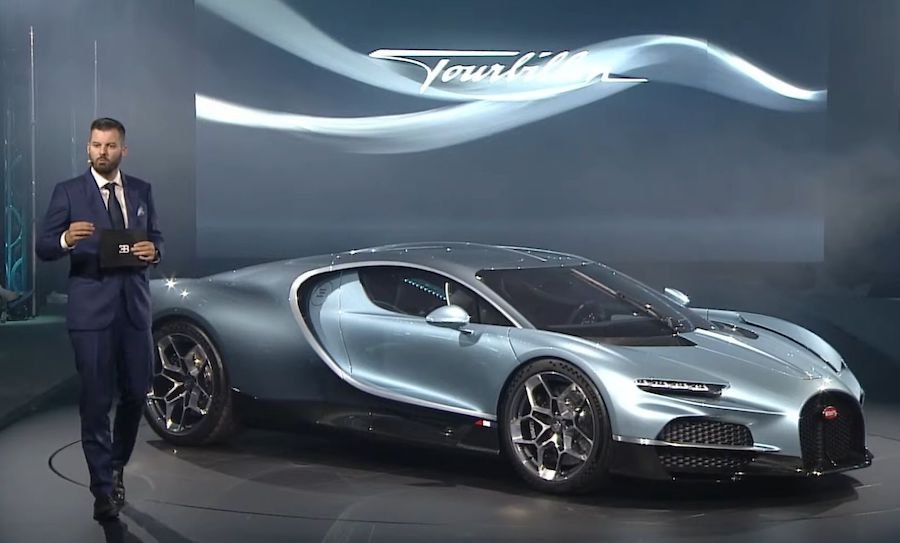The Hybrid Bugatti Tourbillon Is Lighter Than the Chiron. Here's How

The Bugatti Tourbillon costs over $4 million. Just by looking at it, you can tell why. The instrument cluster is akin to finely tuned mechanical clockwork, the carbon fiber bodywork offers typical Bugatti beauty, and under the skin, the drivetrain completes the picture. Its 8.3-liter naturally-aspirated V-16 produces 1,000 horsepower, more than most supercars. Its electric drivetrain produces 800 hp, more than most performance EVs.
Even with both of these systems combined in the same car, the Tourbillon is lighter and more powerful than the outgoing Chiron. How is that possible?
There's no escaping battery weight. Hybrid performance cars solve this problem in a variety of ways. The Corvette E-Ray and new Porsche 911 GTS hybrid use a small but power-dense battery that can deliver high power at the cost of total capacity. The Bugatti Tourbillon takes this route too, but in a slightly different manner. Its 800-volt, 25.0-kilowatt-hour pack is relatively large in terms of capacity, but it's very powerful for its size and unique in its cooling method. The rest of the car is full of tricks, too.
Most electric vehicles use dedicated cooling channels to sap heat away from the individual cells. Bugatti uses direct cell cooling as a lighter alternative. This system circulates a dielectric fluid around the battery without any dedicated channels. Exact details of this system are still murky, but we know it's possible with smaller-volume packs. We've seen it before on vehicles like the all-electric Caterham Seven concept unveiled earlier this year.
The motors are also a key part of the puzzle. It's unclear what their topology is—axial flux or radial flux—but in any case, they're impressive. Including the inverters and reduction gear, it's claimed they offer a power density of 6kw/kg. For reference, many electric motors on their own—without the inverter or gearbox—cannot achieve this figure.
Integrating the rear motor into the transmission would also eliminate the need for a dedicated motor reduction gear, but Bugatti doesn't specify exactly how it's all put together back there.
The V-16 engine compensates for the hybrid system's mass as well. Naturally aspirated, it does away with the quad turbochargers of the old W-16 in the Veyron and Chiron. Without the need for all of the associated plumbing and intercoolers, it weighs just 555 pounds. According to Bugatti, the Chiron's W-16 weighed between 882 lbs and 961 lbs, depending on the trim.
The rest of the not-so-secret sauce is the chassis construction. Its battery pack is a structural member of the carbon fiber monocoque, the front and rear subframes are thin wall aluminum castings, and many other components, sprung and unsprung, are 3D-printed aluminum. The brakes are also carbon ceramic, which takes a lot of mass out of the corners. Even the jewelry-like gauge cluster has a number of components made from lightweight titanium.
When examined at length, it's easy to believe how, despite its powerful hybrid system, the Tourbillon comes out lighter than the old Chiron. Just the engine's reduced weight is a huge savings, and when combined with the army of other mass-shedding details, it's no wonder the new world-standard for hypercars comes out ahead by leaving weight behind.



